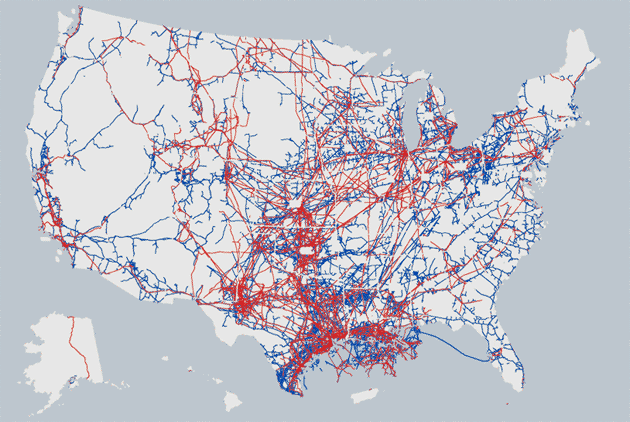Thursday, March 27, 2014
Are You Living on a Time Bomb?
Urban pipes for water, sewage and gas began penetrating cities in the United States in the first infrastructure phase, between 1830 and 1880. By 1880, nearly half of the urban waterworks were publicly owned. The worlds of sewage disposal and gas delivery lagged behind, much remaining in the private sector, because cities were unable to embrace the costs at the same time. But cities kept on building into the next phase of infrastructure development.
By 1945, 100% of the cities in the United States has public sewer and water systems. By 1970, 75% of Americans lived in and around cities. And as the western cities grew, they too added these capacities over time. Clearly, the newer cities with newer levels of expansion had relatively more modern systems simply because they were developed more recently. Today, we are seeing about 85% of American living in and around cities.
Gas delivery remained a function of both public and private utilities. Oh, and natural gas makes for excellent explosive potential! Natural gas and other volatile substances (like crude oil) are also transported by pipelines (some above, others below ground) between and among various regions within the United States as the above map indicates (from Propublica.org – hazardous liquid lines are in red, gas transmission lines in blue). There are oil spills and gas leaks of varying levels of significance making the news on a constant and continuing basis.
We watching our overall infrastructure decay around us. And while highways, dam, levees and bridges are easy to see because they are on the surface, the erosion of underground pipes aren’t so observable and require a lot of highly specialized monitoring and maintenance. To put it mildly, the relevant engineers don’t remotely catch all the problem areas, and even when issues are found, the money to fix the problem completely might just not be available in these economically impaired times.
In early March, a massive explosion took down two buildings in East Harlem, New York City, killing eight people in the mess. It was apparently a leaking gas pipe that provided the fuel that created such a massive destructive force. New York is one of those older cities with older infrastructure, although most of the relevant gas mains were rolled out in the 1940s. But gas leaks are nothing new to New York, a big city with big evidence of an infrastructure plague that impacts so many other cities in the US.
“Consolidated Edison, whose pipes supplied the two buildings leveled by the explosion, had the highest rate of leaks in the country among natural gas operators whose networks totaled at least 100 miles, according to a New York Times analysis of records collected by the federal Department of Transportation for 2012, the most recent year data was available… The chief culprit, according to experts, is the perilous state of New York City’s underground network, one of the oldest in the country and a glaring example of America’s crumbling infrastructure.
“In 2012 alone, Con Edison and National Grid, the other distributor of natural gas in the city, reported 9,906 leaks in their combined systems, which serve the city and Westchester County. More than half of them were considered hazardous because of the dangers they posed to people or property, federal records show. (There are more than 1.2 million miles of gas main pipes across the country. Last year, gas distributors nationwide reported an average of 12 leaks per 100 miles of those pipes.)…
“Elsewhere in the country, a rupture in a major pipeline in San Bruno, Calif., in 2010 caused an explosion that killed eight people. In 2011, a leak from an 83-year-old cast-iron main in Allentown, Pa., caused a blast that killed five people…. ‘It’s like Russian roulette,’ said Robert B. Jackson, a professor of environment and energy at Stanford University who has studied gas leaks in Washington, D.C., and Boston. ‘The chances are, you are going to be lucky, but once in a while, you’re going to be unlucky.’” New York Times, March 24th.
As time passes, we are only going to see more death, destruction and injury from infrastructure failures. As we face more than $2 trillion in need infrastructure upgrades and repairs, the big question remains as to how proactive, versus reactive, we are going to be to modernize America. Strange to see how countries like China are leap-frogging the US by adding state-of-the-art infrastructure as they expand their urban footprints.
To be safe and competitive, we need to be equally aggressive in our infrastrcuture upgrades. The opportunity to build that infrastructure offers better jobs and greater economic competitiveness… and will save countless American lives. We need to understand that building infrastructure is not a cost without a measurable return; it is an investment with a pretty clear rate of return, both in lives saved and in economic productivity efficiencies captured. Investments in America are good for us all, and in the long run not only pay back the costs of repair and expansion but add a productivity return that makes money for us all.
I’m Peter Dekom, and if you really think you are safe from such consequences, take another look around.
Subscribe to:
Post Comments (Atom)






No comments:
Post a Comment